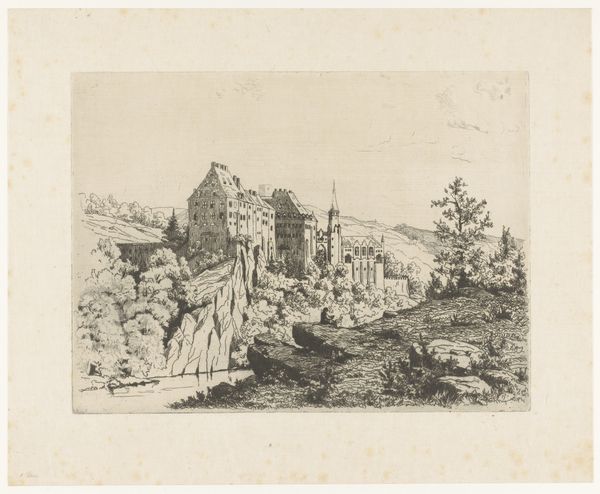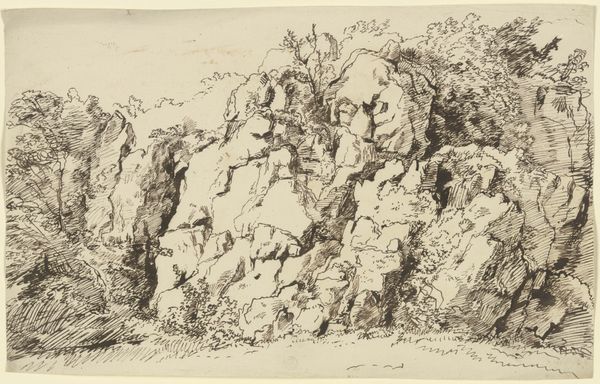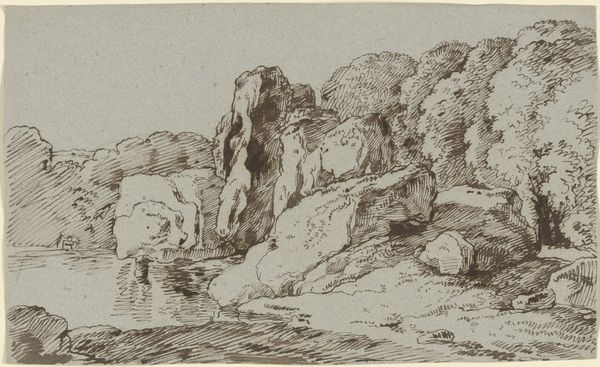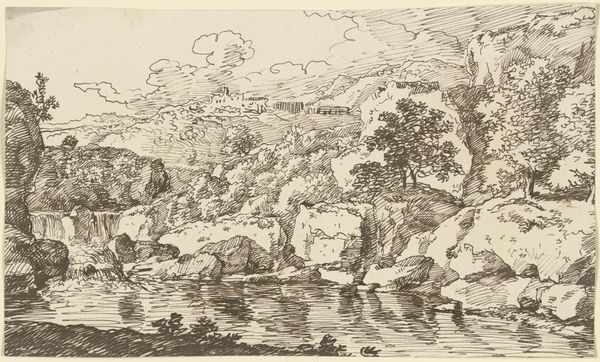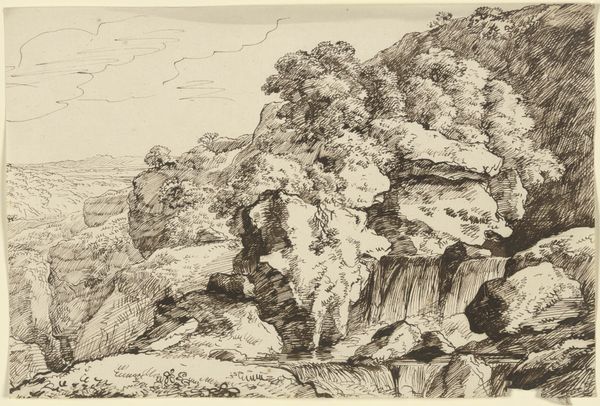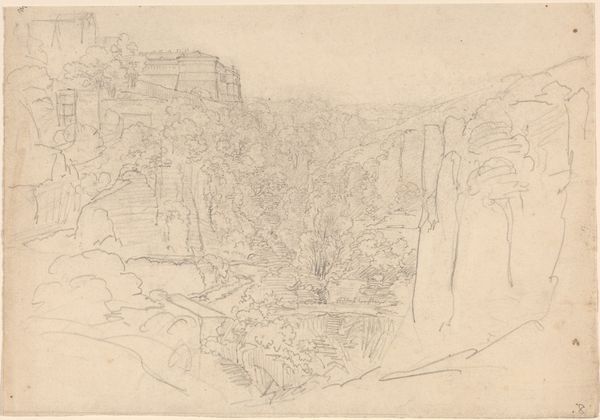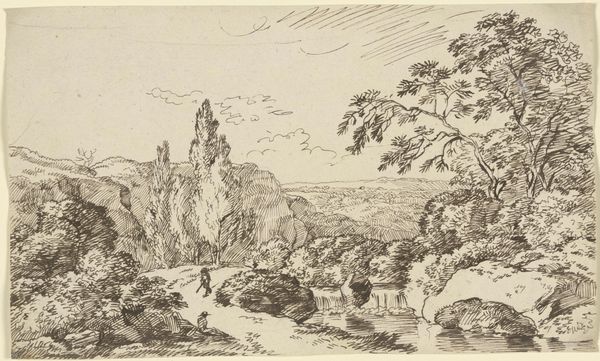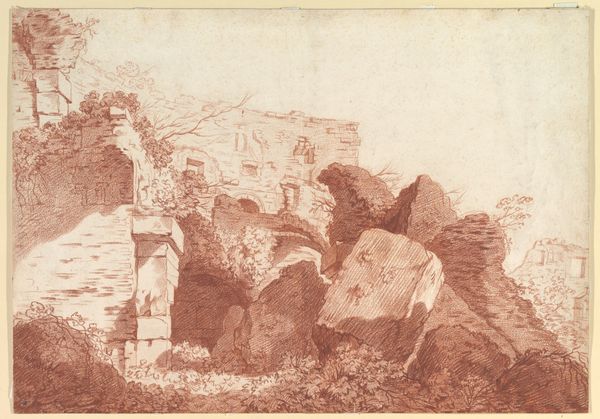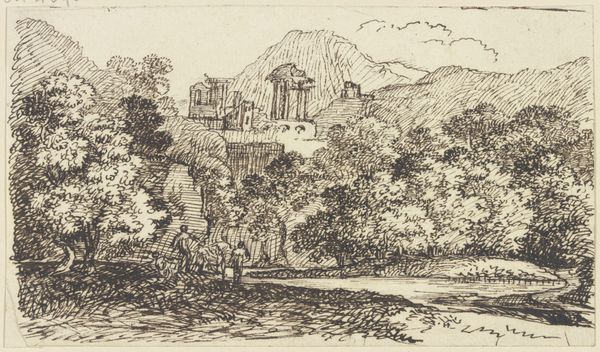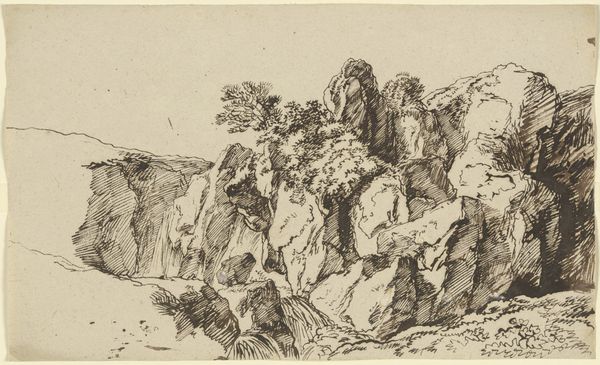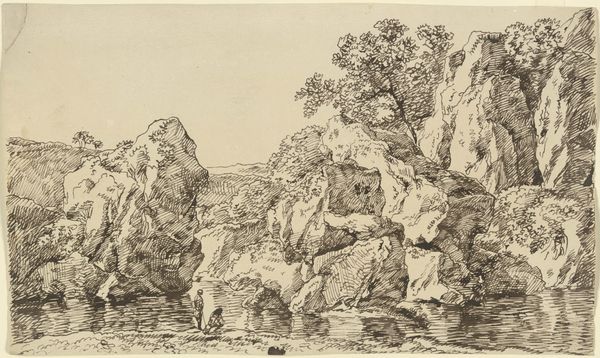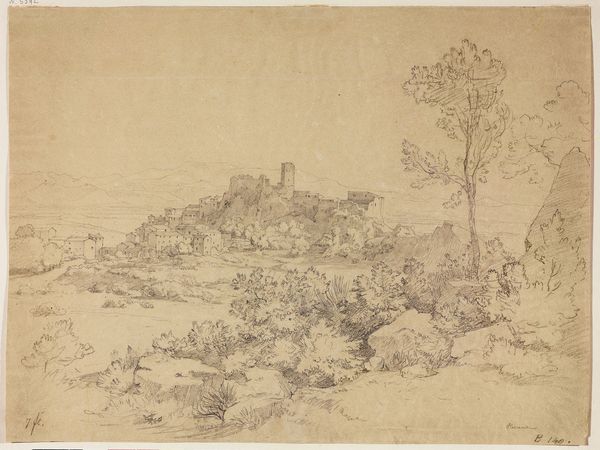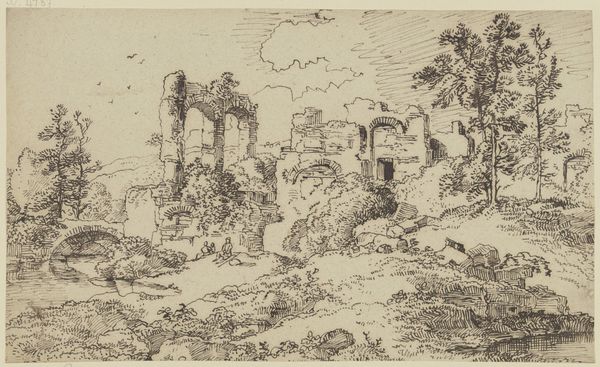
drawing, print, etching, ink, architecture
#
drawing
# print
#
etching
#
landscape
#
ink
#
romanticism
#
architecture
Copyright: Public Domain
Curator: I’m immediately struck by the density of line work here. There’s a real texture created, a layering that both defines the ruins and blurs them into the landscape. Editor: Indeed. What you're observing is a keen example of Franz Kobell’s Romantic sensibilities rendered through etching, ink, and print techniques in "Römische Ruinen mit Staffagefiguren"— Roman Ruins with Figures. This artwork currently resides in the Städel Museum’s collection. Curator: The title seems almost secondary to the way Kobell's used the etching medium. It’s not just representation; it feels almost archaeological, the way he painstakingly builds the image layer upon layer. What's your take on its intended function, as public art perhaps? Editor: It fits well into a historical moment of Romantic landscape fascination, where ruins evoked a powerful sense of the sublime and the fleeting nature of empires. Think about the rise of the Grand Tour; etchings like this circulated widely, shaping public perceptions of Roman history and culture, imbuing the subject with a wistful air. Curator: Do you find the 'Staffagefiguren’ distracting or necessary? The figures add a sense of scale, I suppose, but they seem like almost an afterthought compared to the ruins. It's the arrangement of masses and lines that drives this etching's presence for me. Editor: I see them as a deliberate insertion— reminders of the continuity of human life amidst decay. Consider the era’s political undertones, the rise of nationalism; these figures locate the viewer within that historical narrative, inviting a reflection on power, time, and memory. Without them, it drifts purely to architectural record keeping, to an image with little narrative direction. Curator: So, the narrative comes in with its function as an explicit lesson and illustration of the fleeting nature of empires and human ambition, but without those reminders, this landscape's stark qualities can have their chance to speak volumes. It’s a potent dialogue between form and the historicizing influence of social history. Editor: Ultimately, Kobell’s artistry merges both elements. Through technique and intention, it makes history and formal considerations intrinsically linked.
Comments
No comments
Be the first to comment and join the conversation on the ultimate creative platform.
